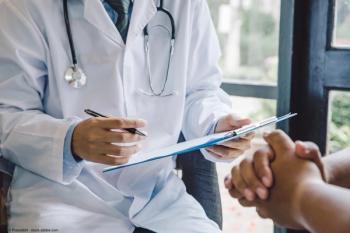
Urology Times Urologists in Cancer Care
- UCC June 2020
- Volume 09
- Issue 02
Urologist's Perspective: COVID-19 provides tough decisions—and valuable lessons
Urologists and patients show resilience, but we must be better prepared in the future, says urologist R. Jonathan Henderson, MD.
There is an old saying, or some say curse, often attributed to the Chinese, which projects, “May you live in interesting times.” If that is the case, we are certainly living out that curse!
The outbreak of the coronavirus disease 2019 (COVID-19) has been chronicled well enough. What is now emerging are the details of how everyone dealt with it. For reasons outside the scope of this article, the state in which I practice, Louisiana, had among the highest rates of infection in the world.
As urologic oncologists, each of us had different challenges, varying by location, practice type, and patient load. These tasks involved deciding which cases to place on hold; how to modify our resource utilization; whether to send patients elsewhere; whether we would provide any interim “place-holder” measures for their disease; and, perhaps the biggest, most time-consuming—discussing all of this with our patients.
In Louisiana, the governor used an executive order early to rein in the spread of COVID-19 and “flatten the curve.” The first such order limited surgery to severe urgencies and emergencies. In our practice, we made the decision that bladder tumors and prostates must continue to be biopsied; how else would we know if there is a cancer and just how aggressive it would be? Patients with testis masses, muscle-invasive urothelial carcinoma, and high-risk prostate cancer continued to go straight to the operating room (OR) or receive standard treatment.
This first executive order immediately changed the world for us, likely forever. We rapidly adopted telemedicine for the majority of patients, while postoperative patients and new, potentially high-risk patients, were still seen in the office.
The reaction of patients was mixed. Some were angry that we would not see them in the office, whereas others were thankful. Many patients embraced telemedicine (even seen by some as a personal treat to be able to welcome their doctor into their home); others refused to cooperate until things returned to “normal.” The 1 consistent theme among patients was concern that their cancer would progress to a point where control was not possible. The amount of time it took to refocus education and anxieties was significant.
Just as we started to get a handle on this situation, the governor issued a new order, and regulations became even tighter. Now, only patients with an immediate life-threatening condition could utilize hospital resources. During this second phase, almost all cancer surgery stopped. Patients with testis masses proceeded to the OR, but biopsies and resections were not performed.
Patients with muscle-invasive bladder cancers were allowed to undergo cystectomy, but this introduced a new dilemma: How prudent was it to take this patient to the hospital and potentially utilize resources urgently needed for the patients with COVID-19?
For example, I had a patient I will call Stan. Stan had high-grade muscle-invasive urothelial carcinoma and a negative metastatic survey. He completed neoadjuvant chemotherapy in the beginning of March. He was already a high risk for surgery, however, with an ejection fraction of 38%. He also had severe chronic obstructive pulmonary disease. None of this is considered abnormal for a patient with bladder cancer.
What was abnormal however, was the thought process of resource rationing. During my 25 years in practice, we found the cancer, followed appropriate protocols, and when it was time, took the patient to the OR. Never before had I asked, “Will there be an available ICU bed when he needs it?”
That was just the half of it, though. In evaluating whether or not to proceed with Stan, just as every other patient during these times, we also had to consider the possibility of his becoming infected with COVID-19 while in the hospital. If infected, with his comorbidities, would his risk exceed the oncologic risk? Eventually, after consulting with all involved, Stan’s surgery was delayed until the COVID-19 wave reversed. To complete this particular happy ending, in the second week of May, Stan had an uneventful cystoprostatectomy and ileal conduit. His pathology was TxN0.
No time to pat ourselves on the back
Although Stan’s success is worth celebrating, it is not time to pat ourselves on the back. We have no way of knowing whether a wave of worse cancer is coming. How significant is the delay of treatment going to be nationally or worldwide? There are two sides to this question. First, of our patients with known disease, what is the impact of the treatment delay? Hopefully minimal. Hospitals across the country are pledging extended hours to catch up on the backlog of cases. I believe, given the natural course of urologic disease, that this population will demonstrate a minimal effect.
One positive may come of this. In my practice, I am seeing a sudden increase in the acceptance of active surveillance as a treatment alternative.
The second, more concerning half of the question: what about the patients who have had their initial diagnosis delayed by the COVID-19 crisis? With regard to prostate cancer alone, we are already dealing with the fallout from the United States Preventive Services Task Force decree with a noted increase in presentation of patients with a higher stage and grade. What of the men who had their initial diagnosis delayed? It stands to reason that this population will grow because of COVID-19. Men being men, the window of willingness to be screened may be closed for a while.
The same could be true of other urologic malignancies, although with worse consequences. In the next few years, we may see a significant increase in delayed presentation of all malignancies.
In Louisiana, we are open again. We are in catch-up mode. Let us pray we do not have the second COVID-19 wave that some have forecast. The lessons learned here are twofold: We, as a urologic community, need to prepare for the next pandemic or whatever worldwide disaster interrupts patient care as pervasively as COVID-19 has. More immediately however, we need the organizations that speak the loudest for our specialty to get the word out to our patients: do not allow COVID-19 to make you a statistic. Delay your care no more. Do not let another year go by until you have that annual digital rectal exam and prostate-specific antigen screening.
For the patient who had hematuria and their office visit was canceled by COVID-19, do not wait until you see blood again. As for the testis nodule that may have become less acute and more “comfortable,” it is not normal; go to the doctor.
The urologist in cancer care is a resilient and vigilant clinician. I believe we and our patients made it through this. Like Clint Eastwood’s character in Heartbreak Ridge, we improvised, we adapted, and we overcame.
Henderson is a urologist at Regional Urology in Shreveport, Louisiana.
Articles in this issue
over 5 years ago
How to choose systemic therapy for metastatic RCCover 5 years ago
How to perform office-based blue light cystoscopyNewsletter
Stay current with the latest urology news and practice-changing insights — sign up now for the essential updates every urologist needs.



















